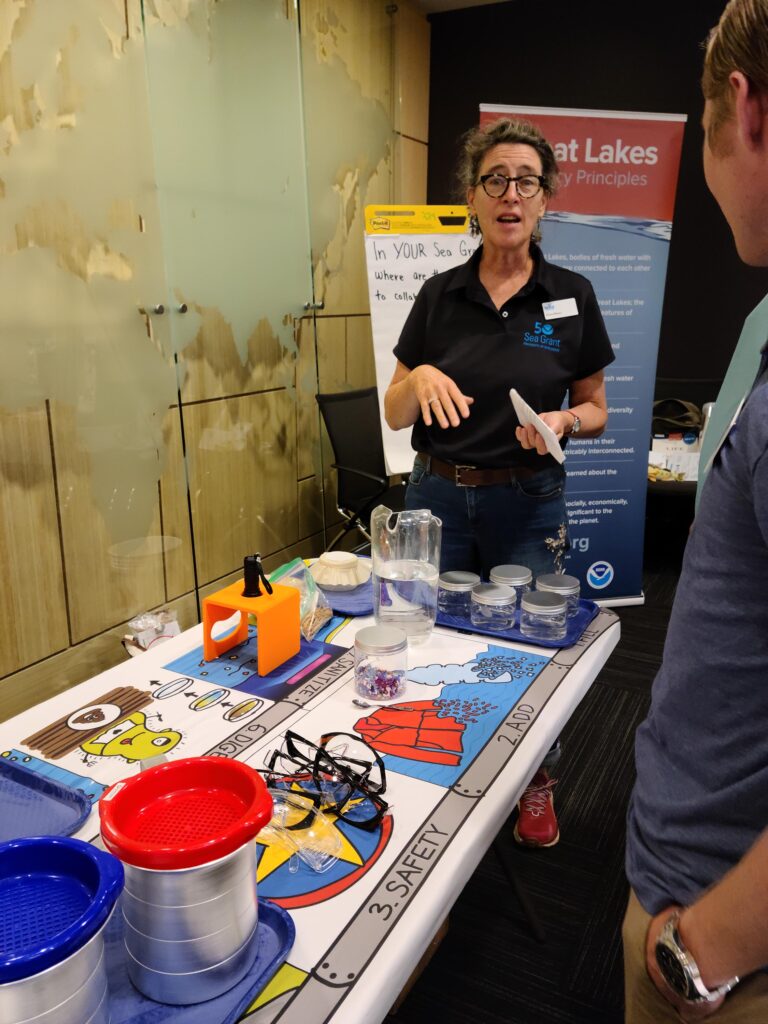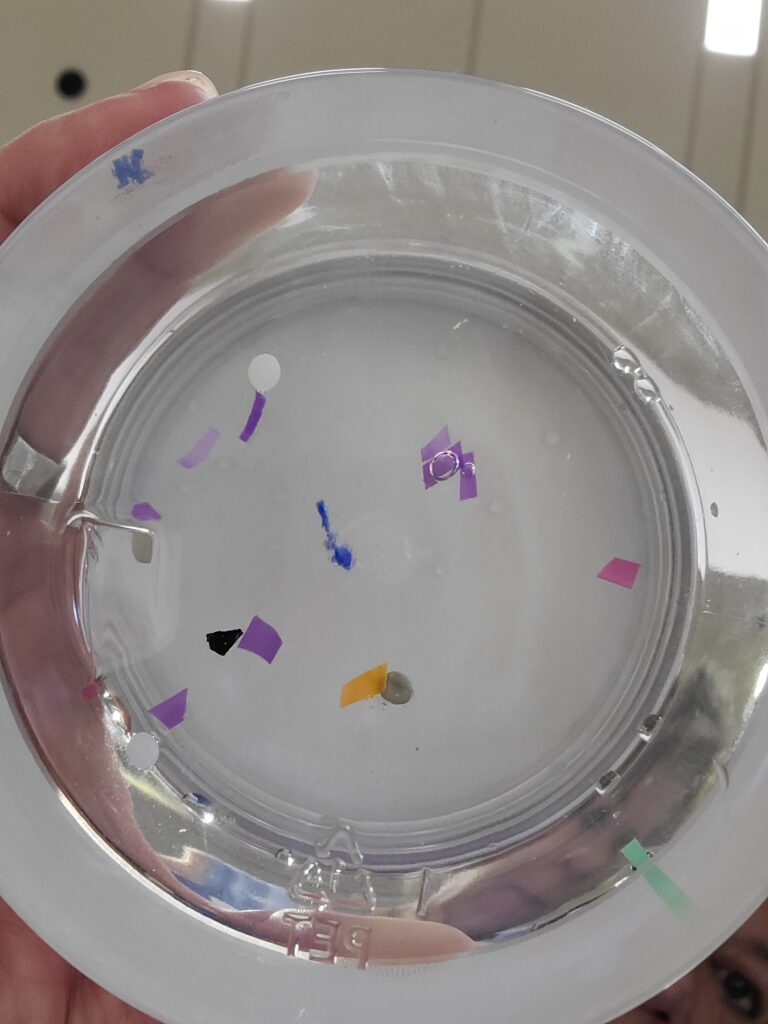
Wisconsin Sea Grant’s Anne Moser presents the Plastic Panic Kit to Great Lakes educators at a conference in Chicago. Image credit: Marie Zhuikov, Wisconsin Sea Grant
When Anne Moser began her librarian career in Seattle in the early 1990s, one of her first experiences was a tour of the city’s wastewater treatment plant.
“It made a big impression on me, watching their operations and what great, amazing miracles can happen there. Wastewater enters the plant, is treated and is clean enough to discharge into Puget Sound. Creating this kit feels like I’ve come full circle in my career,” Moser said.
Wisconsin Sea Grant’s senior special librarian and education coordinator has now learned enough about wastewater treatment to create “Plastic Panic,” a grab-and-go teaching kit that formal and nonformal educators can use to teach about plastic pollution in the Great Lakes, specifically, microplastics.
Unlike larger plastic containers and pieces, microplastics (particles 5 millimeters and smaller) are too small for wastewater treatment plants to filter. What goes into the plant comes right back out into the environment. Fish and other animals can mistake microplastics for food. A belly full of plastic can make them feel full without providing any nutrients. In addition, heavy metals and other pollutants tend to stick to plastics. These can harm animals that eat the plastic, and the pollutants can work their way up the food chain this way.
The kit got its start after a plastic awareness-raising exhibition at the University of Wisconsin-Madison’s Chazen Museum of Art in 2019 called, “Plastic Entanglements.” That led to a prototype learning kit, which has been updated this year. Information in “Plastic Panic” is based on research by Derek Ho, biological systems engineering Ph.D. student under Troy Runge, UW–Madison. Artwork is by Chelsea Mamott, Wisconsin Energy Institute digital media specialist.
Although the curriculum is designed for fourth- to fifth-graders, Moser said the kit has wide appeal.
“When we presented it at the Chazen, we saw it caught visitors’ attention — from the littlest learners, maybe four or five years old, all the way up to the parents and grandparents. The tabletop’s eye-catching, so many people came over to look at it. We also learned that many people don’t know much about what happens to the wastewater leaving their house. The activity demystifies this weird building that treats wastewater,” Moser said.

Colorful microplastics filtered out in one of the Plastic Panic Kit activities. Image credit: Marie Zhuikov, Wisconsin Sea Grant
Colorful artwork and colorful plastics enthrall and teach.
“We have included a sample jar that has different types and sizes of plastics,” Moser said. “You get different densities, different weights, so they can experience the way plastic behaves in water. Some of it sinks, some of it floats, some stays in the middle. You get to filter and sanitize the sample, then look at what is ultimately discharged into our water bodies. So, it’s kind of high-level thinking that kids get to enjoy without even realizing it.”
Moser said the kit is “grab-and-go” for educators. “It comes with a guide that has clear instructions so they will be able to present the activity right out of the box.” It also provides questions to ask students, background information for educators and worksheets for classroom use. “So, hopefully, they can just grab it and do it.”
Content is aligned with Sea Grant’s Great Lakes Literacy Principles but not yet aligned to specific state educational standards.
With the help of Great Lakes Restoration Initiative funding, 23 kits were produced by Sea Grant’s Center for Great Lakes Literacy and distributed to Sea Grant programs around the Great Lakes Basin. Five are available free of charge in Wisconsin, and the kit is shipped via UPS.
To order “Plastic Panic,” fill out this form.





